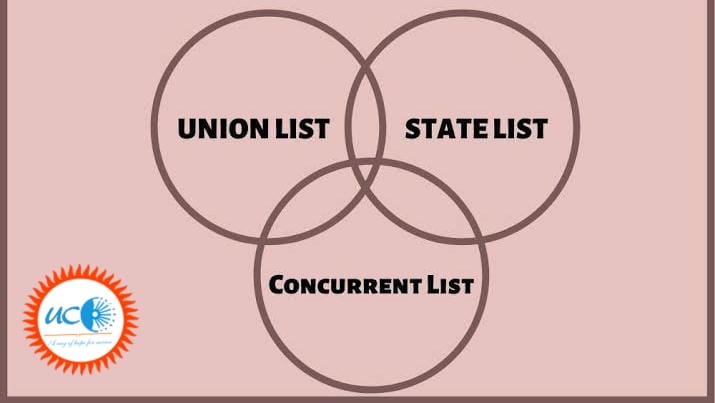There has been an increasing demand for doing away with the concurrent list. Examine the utility of concurrent list in the light of recent events.
Approach:
- Introduce with briefly explaining what concurrent list is.
- Then present arguments for doing away with the concurrent list.
- Substantiate your arguments with recent examples.
- Then citing the utility of the concurrent list, suggest some reforms.
- Conclude with recommendations of Punchhi Commission.
Answer:
Concurrent list is a group of topics in Schedule VII of the Constitution over which both the federal government and the states simultaneously have the authority to enact laws in the course of exercising their duties under Article 246. The concurrent list ensures both uniformity and variety of law since it includes topics where national uniformity is desirable but not necessary. For instance: education, the law, the environment, etc.
The concurrent list, however, has continued to be a point of conflict between the centre and the state. The chief minister of Telangana recently advocated for eliminating the concurrent to give states more power.
There has been rising demand for doing away with the concurrent list due to misuse of concurrent list as it leads to:
- Colorable legislation: At times center encroaches state list indirectly by use of the concurrent list, for example- recent alleged misuse of Entry 33 of the concurrent list to bring the controversial farm Acts 2020 thus bypassing state’s legislature domain over agriculture.
- One size fit all approach: Actions of center on subjects related to concurrent list can create
problems by denying space for states to manage their affairs according to their capacity and need.
For example: Infectious and contagious disease is a concurrent list subject. Centre imposed
national lockdown without regards to the state’s opinion.
- Regional diversity suffers in quest for attaining uniformity. For example: Medical education is
a concurrent subject. Introduction of uniform NEET has proven to be disadvantageous for students of state board and vernacular language.
- Abdication of responsibility: Center and state tend to engage in blame game in matters related to the concurrent list during governance failure. For example: Social security, employment, welfare of labour all are concurrent subjects. During lockdown both center and states blamed each other for migrant crisis.
- Politicization of issues: Center may create laws to further its election fortunes or to cater to its
electoral constituency. For example: law banning triple talaq (marriage and divorce is a
concurrent subject).
- Financial burden on states: Central laws and schemes might require allocations of the fund by the state. Due to union dominance states might be compelled to allocate funds despite their other unfulfilled priorities. For example: Right to education, National food security act.
- Over concentration of power: Since independence, numerous amendments to the constitution
have reduced state list subject and increased subjects under concurrent list and union list. This
goes against the principle of subsidiarity and devolution in a federal setup.
Since, concurrent list has an important role in balancing uniformity and diversity, certain reforms may be undertaken instead of outright repealing the concurrent list. Some suggested reforms are:
- Centrally laws and schemes should be flexible enough to allow states to adapt and innovate.
- Decentralization of power: Centre should devolve more power to states. Concurrent list should be generally left for states to legislate.
- The Niti Aayog can serve as a platform to iron out differences on issues related to subjects of
concurrent list. Implementation of Punchhi commission recommendations like center should consult the states before making a law on the concurrent list can be a good way forward for strengthening the spirit of cooperative federalism in India.








